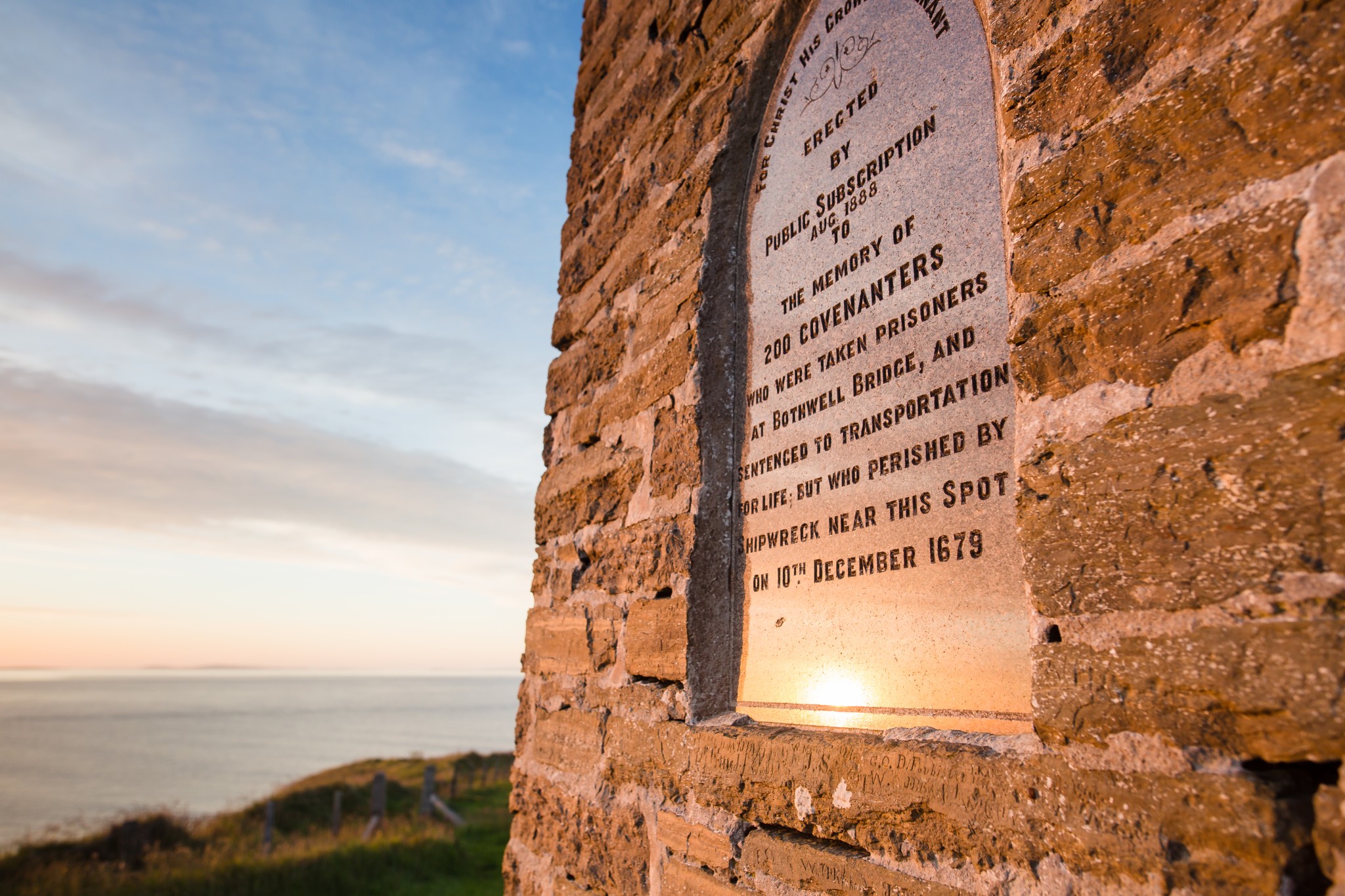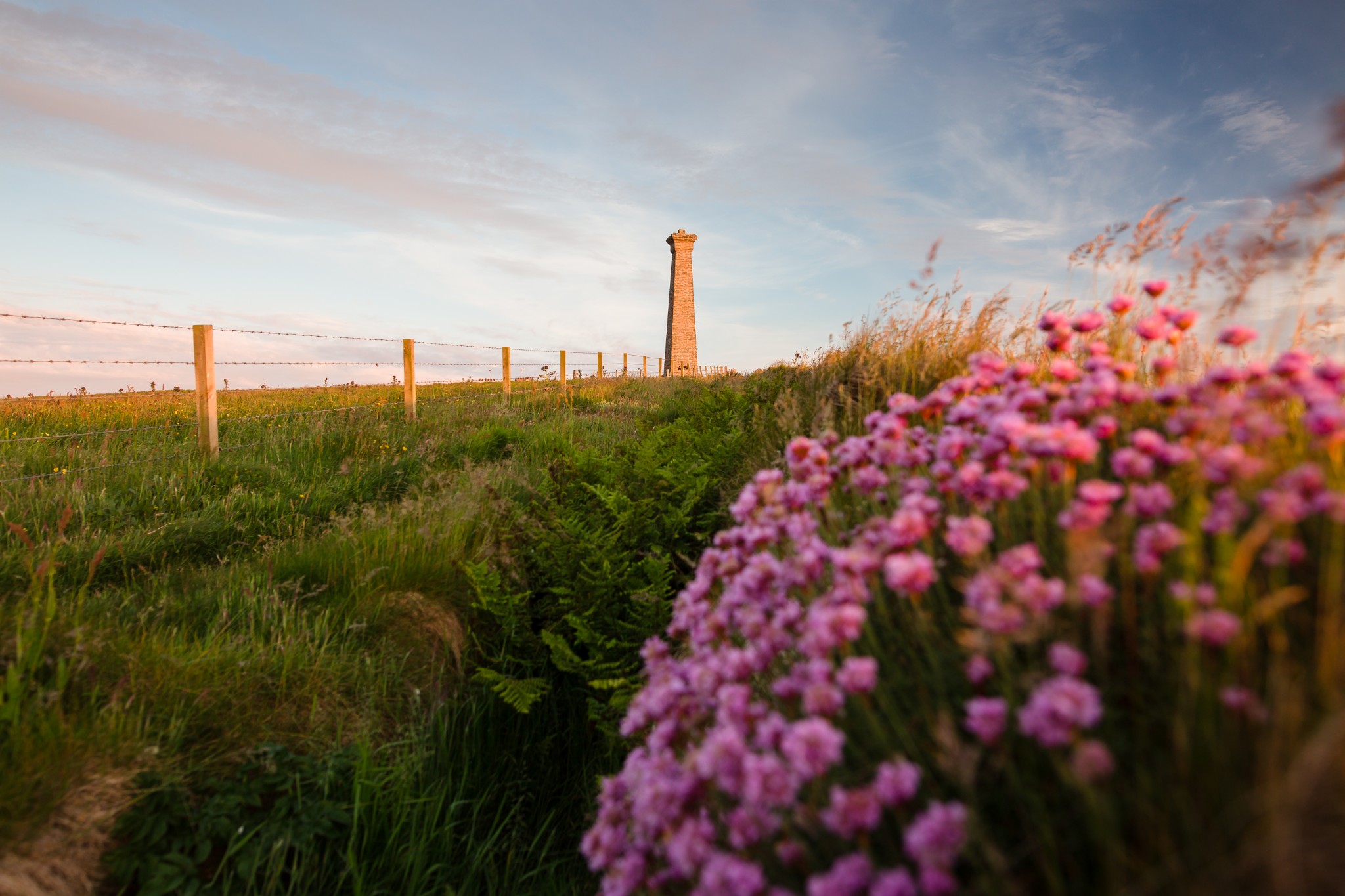The Covenanters Memorial in Deerness dates to 1888 but the story behind it begins over 200 years earlier at the Battle of Bothwell Bridge near Glasgow on 22nd June 1679.
The encounter was the latest in a series of armed clashes between Covenanters and government troops during an era of religious and political conflict in Scotland. The Presbyterian Covenanters believed in the sovereignty of God while King Charles I, and later his son, King Charles II, sought to re-impose the episcopal system and exercise their divine right to rule.
When King Charles II was restored to the throne in 1660, he introduced religious reforms that forced the Covenanters to leave the established church. Many ministers continued to preach secretly in the open air at what were known as conventicles. Increasingly severe persecution of Covenanters led to armed rebellion with wins on both sides before the final battle at Bothwell Bridge, the largest of the Covenanter uprisings of the 17th century. Despite having a larger force than the government army, internal disputes and poor organisation contributed to the defeat of the Covenanters and the effective end of what had been a long rebellion.

After the battle, over 1000 Covenanters were taken prisoner and held at Greyfriars Kirkyard in Edinburgh. Over the following four months they were kept outdoors and provided 4 ounces of bread a day. The majority of men met a mixture of fates from execution to being set free, however 257 remaining men were sentenced to transportation to the American colonies destined to become indentured servants. In November 1679, they were led to Leith docks and put on board the 'Crown of London'. They spent 12 days in port, confined in a small space below deck, said to be so crowded that many fainted and some almost suffocated. They were given little to drink or eat which only exacerbated their already bleak conditions.
The ship finally set sail on 27th November 1679, reaching Orkney on 10th December when a fierce storm drove the ship on to rocks off the coast of Deerness. According to one of the Covenanters who survived the incident, the captain and crew secured the hatches so the trapped prisoners couldn't escape from the sinking ship. Several accounts told of one crew member who defied the captain's orders and broke through the deck with an axe.
About 50 prisoners did manage to escape, along with the captain and crew, however over 200 of the Covenanters drowned while still imprisoned below deck. It is said that there was no willingness to save them due to the financial implications. The captain would only be paid for the indentured servants he delivered or recompensed for any that died during the voyage. The fate of the survivors is mostly unknown. According to local accounts, some were recaptured and shipped to the colonies, some were said to have found passage off Orkney and some were permitted to settle locally.
The public motion for a memorial to the drowned Covenanters didn't come until 1886, instigated by a Dr Gunning, a wealthy surgeon who was visiting Orkney from Brazil. Having been born in Dumfries, a place with strong connections to the Covenanters, he understood their history and was moved by the tragedy. His idea was taken up locally and a meeting was held to launch a public subscription, which included a £50 donation by Dr Gunning. When almost £100 had been raised, it was decided that a 40ft plain obelisk, made from stone quarried on the beach, would be built in Deerness overlooking the site of the shipwreck. The remaining funds were used to build a public fountain memorial in front of St Magnus Cathedral in Kirkwall.

The inauguration of the Covenanters Memorial took place on Wednesday 22nd August 1888 with over 500 people in attendance. During the ceremony a bottle containing the history of the Covenanters, daily papers, jubilee coins and the names of the subscribers was placed in a recess then covered with a granite plaque inscription.
The monument in Deerness continues to serve as a solitary headstone for the Covenanters that died that night, some of whom are buried in unmarked graves nearby.
Susanne Arbuckle hosts the Adventures Around Scotland blog. You can also find her on Facebook, Instagram and Twitter.
The Promoting Orkney project has been part financed by the Scottish Government and the European Community Orkney LEADER 2014-2020
